Are We Living the Ostrich Paradox?
The earthquake that hit 10 of our cities on February 6 and what we experienced after it showed us once again that we all know that Turkey is on an earthquake belt; scientists have made the necessary warnings after the 1999 earthquake, they have drawn fault maps and they have continuously provided earthquake data and historical data. They took the data and predicted where, at what depth and intensity, and when an earthquake might occur. Scientists don’t say, “I told you so,” when the prediction comes true; they say, “Data-based analyzes said that it would happen with such a probability, we stated this, the event took place within the prediction range we gave.” But sometimes, we rise to the level of prophecy in the media, focusing on what the “master” says at that moment rather than what the research says. Just as the weather reports we look at from our phones are sometimes wrong, and we even see different results in different weather applications; Meteorologists measure and analyze data with the same logic geoscientists use. Earthquake experts always say the same thing, they just set up different models with different assumptions and calculate the location, length, and other variables of the fault differently, but they all say that there will be an earthquake, so it’s not something new what we’ve heard for the past week… #earthquake #urbanization #precaution #analysis #research #review #assumption #paradox #book #disaster #naturaldisaster #data #ipsos
According to the results of the Ipsos 2023 Prospects Survey, 2 out of every three individuals thought there would be a major natural disaster in their country. This rate has increased by 8% compared to the previous year. This research was conducted through an online panel with 24,471 people aged 18-74 in 36 countries, including Turkey, between October 21 and November 4, 2022.
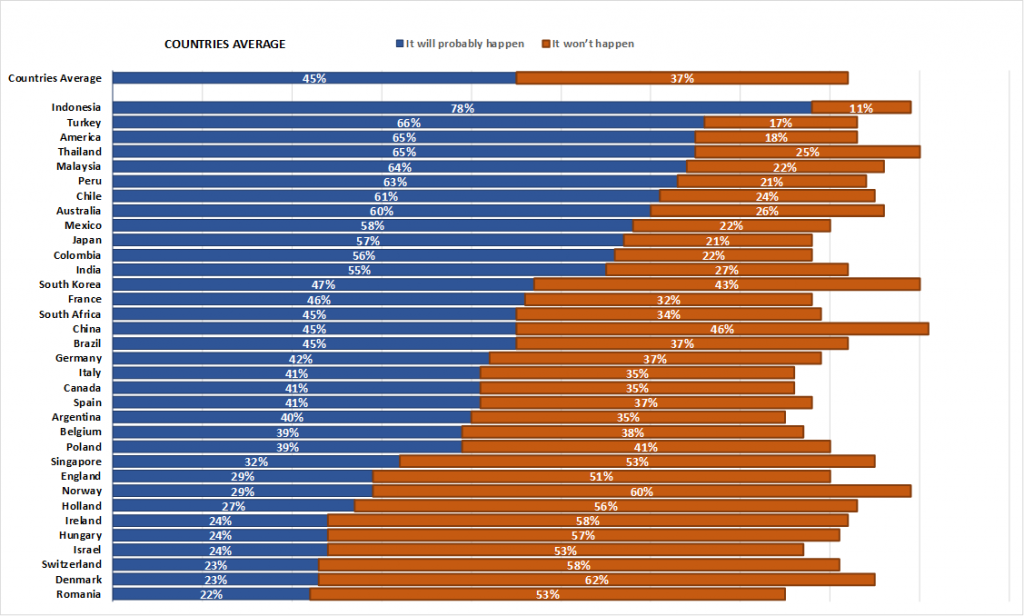
Most of us are waiting for an earthquake disaster. Ipsos has just published the results of the online survey it conducted with 1000 people between 14-16 February in other provinces except ten provinces affected by the February 6 earthquake. The results are interesting.
After the recent earthquake, 43% of the individuals living outside the ten provinces where the earthquake took place think that it is very likely that such a disaster will occur in their own province, and 42% believe that there is such a possibility. In total, 85% of individuals are concerned that such a disaster may occur in their own province.
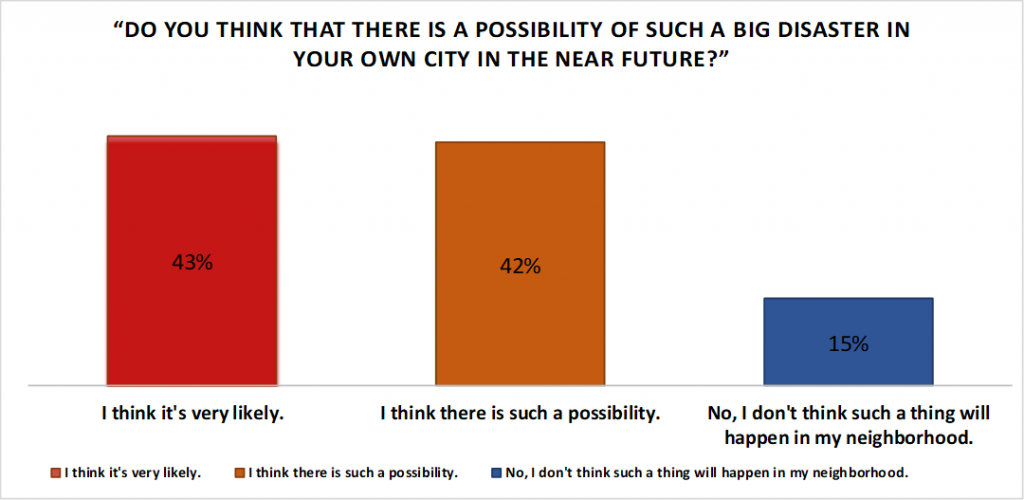
However, although the majority of the individuals living in Turkey think that such a disaster will occur in their own province, only 24% of the individuals living outside the ten provinces hit by the earthquake today had a survey done on the earthquake resistance of their houses. Another remarkable point is that 27% of the individuals state that the house they live in is not earthquake resistant, and 36% are unsure whether it is durable.

If the building is risky, the majority of individuals tend to move, but only 40% of individuals think about moving in case of an earthquake.

Although TCIP is a compulsory insurance that everyone should have, 55% of individuals state that they do not have insurance, and only half of these people are considering taking it out.

All these results shows us that we all know everything, but we see the probability as low, and we do not take precautions against an earthquake; in other words, like we look at the weather forecast and see the probability of rain as low and do not take an umbrella with us. But if an earthquake with a low likelihood occurs, the consequences are very severe.
I think even though we know, we say maybe it won’t hit me, perhaps nothing will happen to me. However, this earthquake, which is certain to happen, will still hit our loved ones we leave behind, even if it is not in our lifetime. Even if our house is safe, how do we know that our loved ones or ourselves will not be caught in an earthquake in unsafe buildings during the day?
“Why do we act like this?” I found an answer in a study entitled “The Ostrich Paradox: Why We Are Caught Unprepared for Disasters” (*) by professors Prof. Robert Meyer and Prof. Howard Kuntreuther from the University of Pennsylvania.
The academics did this study due to the damage and deaths from Hurricane Ike in Galveston, Texas, in 2008. In 1900, a storm hit the same place and killed more than 8,000 people. Great measures were taken from 1900 to 2008; like satellite surveillance, radar alerts, aerial reconnaissance, wave wall construction, flood insurance measures against losses…
Yet, things didn’t go as planned. Despite warnings of “a big storm coming,” those living near the coast did not leave their homes, and it turned out that most of them did not have flood insurance. Huge waves formed due to the storm, overcame the sea wall. Therewith, academics saw a striking gap in understanding between knowledge and “protective technology” and “protective action”. Science has improved the technological ability to predict disasters, but this has not reduced the resulting physical losses.
The “Ostrich Paradox,” named by Meyer-Kunreuther, expresses the disconnect between knowledge and action. As we know, ostriches bury their heads in the sand to escape threats, and the fallacies that are part of people’s “cognitive DNA” shape their perception of the world and often cause them to ignore disturbing information, say the professors. They state that if people know this, they can learn to adapt and act more quickly against threats.
Then, based on research, they reveal six decision-making “biases” that impair people’s thinking abilities and cause them to make errors :
The first of six cognitive biases relating to decision-making under uncertainty that weaken people’s thinking and lead to error is Myopia: it is the most dangerous bias that comes into play when planning for emergencies. Myopia means being short-sighted and seeing more clearly what will happen in the near future than what will happen much later.
The second bias is “Amnesia.” Not being able to remember the past is a high-risk cognitive error. This form of learning helps us learn basic skills but works against us when planning for potential long-term disasters. Therefore, after floods and earthquakes, people return to the scene of the crime.
However, decisions to invest in protective measures require serious predictive power and management will. To protect against unlikely but dangerous disasters, humans must use their long-term memory and take costly actions with little immediate return. Therefore, they should learn that this action will be useful and valuable in the future. But in this context, having to change the course of people’s lives is the hard part.
The third bias put forward by academics is the Optimism bias; the human tendency to focus on good results hinders crisis preparation. Disciplines like statistics explain how to think about probability, but few people know statistics. When dealing with more complex events like disasters, people tend to blend facts, emotions, and subjective impressions.
An Appropriateness bias refers to the tendency to give more weight to events you have personally experienced. The things you see happening seem most likely, while the things you don’t encounter seem unlikely.
A Compound bias refers to the human tendency to assign a lower probability to something that might happen in the near future rather than accepting it as more likely over time. People living in a disaster area 200 years ago may not take out insurance because they still think they are safe.
The fourth is Inertia; people’s inaction is the biggest obstacle to disaster preparedness. People tend to live normally and maintain the status quo. But preventive actions are not “normal.” People must take out disaster insurance and add security measures to their homes. The problem is how to ensure those who can’t be proven to incur an immediate loss are guided to act “as normal” to safe options.
The Fifth is Simplification. People make bad decisions because they over-simplify the factors involved. Decision-making is complex, so people try to simplify decisions. They tend to consider only a few factors, the ones they think are easiest. Because probability is difficult to decipher, people often cannot determine how likely adverse events are. There is widespread evidence that people often ignore probability information when making decisions under uncertainity.
The People’s One-Action bias: When preparing for a possible disaster requires multiple steps, they take a step or two to mentally relax and feel ready for the potential threat from afar. However, a few steps may not be enough to close the vulnerability.
The sixth and final bias is Herding. Humans are social animals and tend to follow the group. Usually, this is fine. But when people make decisions with incomplete information, herd instinct can mislead them.
The simplest way to manage risk is to avoid it. Completing a behavioral risk audit is the first step in our disaster preparedness.
A four-step behavioral risk audit can help improve your organization or community’s disaster preparedness. First, clearly define your relevant “biases”. Second, explain how these biases lead to certain risk misunderstandings. Third, analyze how this unfolds in actual preparation. Fourth, devise remedies to change one’s actions and overcome biases.
On this subject, I recommend you to watch the related video on Netmiyiz’s YouTube channel (https://www.youtube.com/watch?v=PH3_ikXw2so).
For example: To cope with Amnesia, it is necessary to make the existing “reward structure” for earthquake insurance more attractive and understandable. For instance, reward people every year for not making a claim. This practice empowers them to take the correct action and reminds them of the value of earthquake insurance.
Insurance companies also play an essential role in earthquake prevention and compensation. Insurance companies can offer earthquake insurance policies that span several years so people don’t have to renew insurance policies yearly. Insurance companies may also bind their policies to the building rather than the owner. Those who follow, the preferred methods for building in an earthquake fault or hurricane zone or even do better could be rewarded.
If we as a society are to truly dedicate ourselves to reducing losses from major disasters such as earthquakes in the long run, we must do more than wait for individuals and public administrators to wise up on these investments and measures on their own.
Returning to the Ipsos research, many results give us more clues about future earthquakes and precautions to be taken. In the first earthquake, TV and social media were the channels where news about the earthquake was received; In the second earthquake, getting news from TV was 2.5 times more than social media.
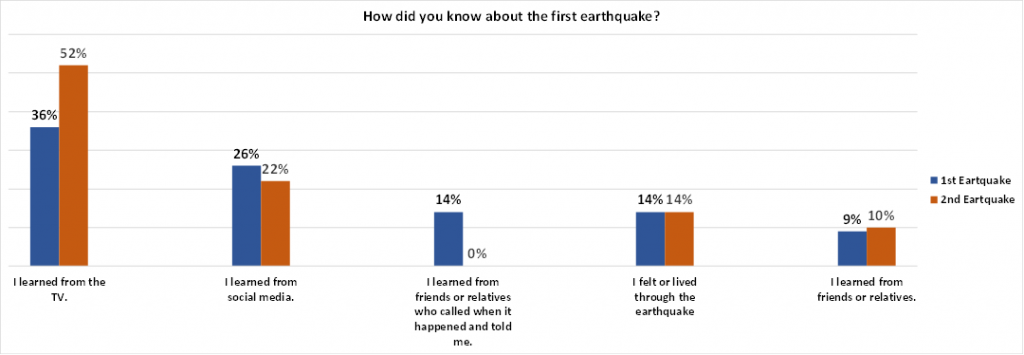
Almost every individual in society follows the news about the earthquake (98%). Programs on TV and social media are channels where news about earthquakes is followed. Among the TV channels, Fox TV was the prominent channel. Show TV, Kanal D, ATV, CNNTürk were next. TRT was not among these channels. We can also attribute the high TV rate to the desire to visually understand how the event(s) happened. Only 16% heard from an online newspaper. Instagram was the platform where news was followed the most on social media, with 74%. Twitter and YouTube were next…
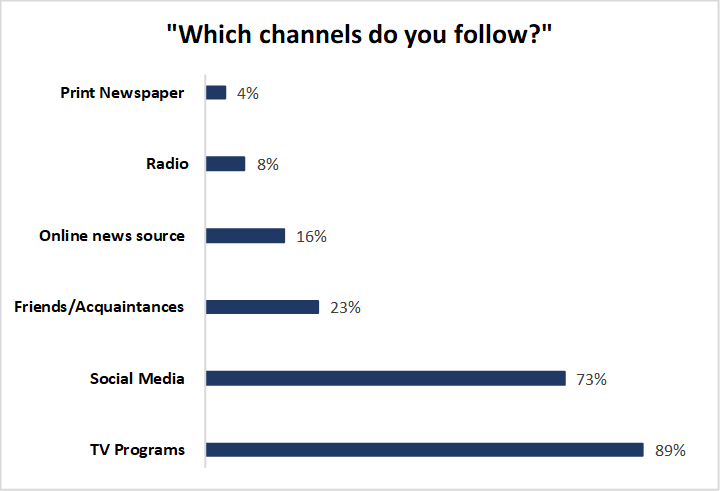
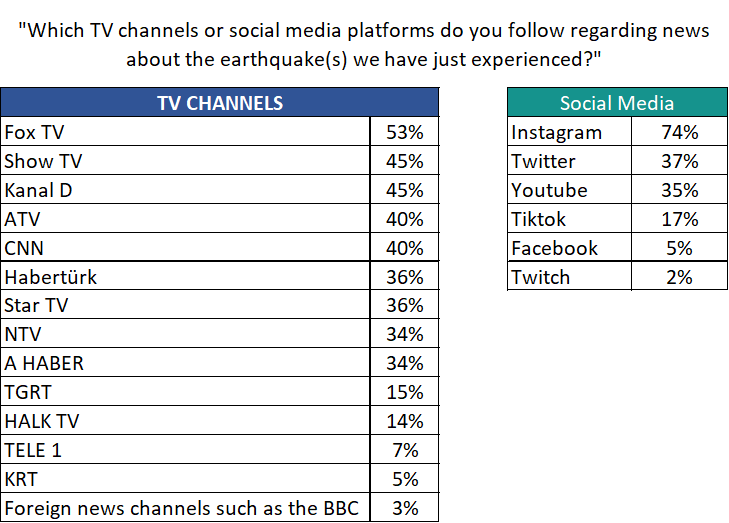
While the majority see contractors and building inspection companies as responsible for the loss of life in the earthquake, municipalities and government + ministries are seen as the third and fourth responsible. 8% holding municipalities responsible. We will be able to see clearly whom the real culprit changes to according to our point of view and only when the events are brought to the courts.
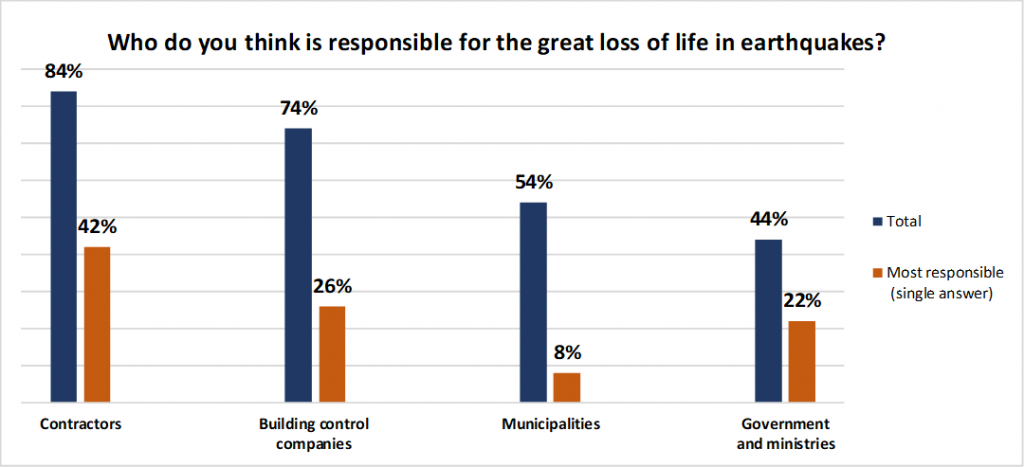
“What is the reason for the buildings to collapse?” When asked, the answers are as follows: illegal construction in violation of the regulation (75%), failure of building inspection companies to do their work (71%), lack of government or municipal control (69%), and zoning amnesties (36%). The rate of those who think that the earthquake itself was very big and there was nothing that could have been done is only 22%. This result is again a perception. Zoning amnesty does not demolish a building. The buildings were already built, and the state took money from the buildings that they could not demolish and only made them legitimate.
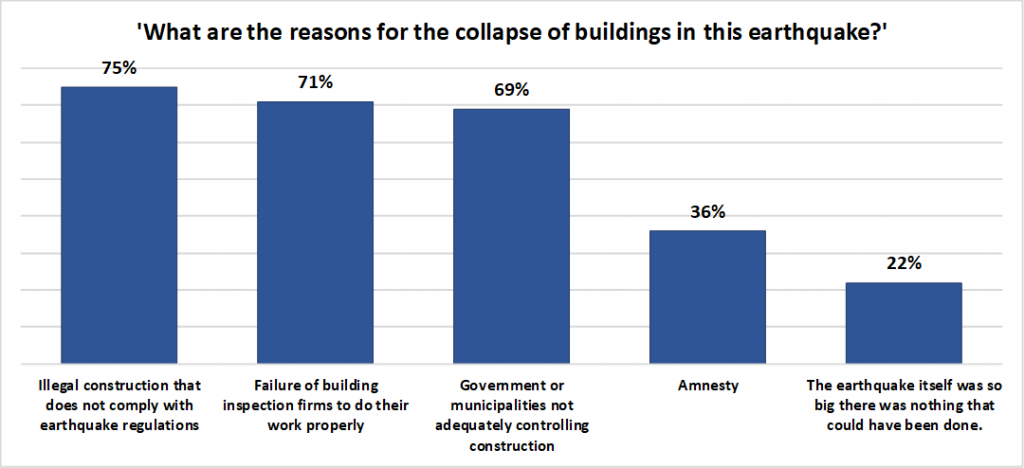
And interestingly, only 24% believe that all necessary measures will be taken after the earthquakes we’ve experienced. Even after such a major disaster, 28% of society thinks that necessary precautions will not be taken for possible earthquakes in the future. As you can see, 76% still think that what needs to be done will not be done. Then, why would these same people take precautions for themselves?
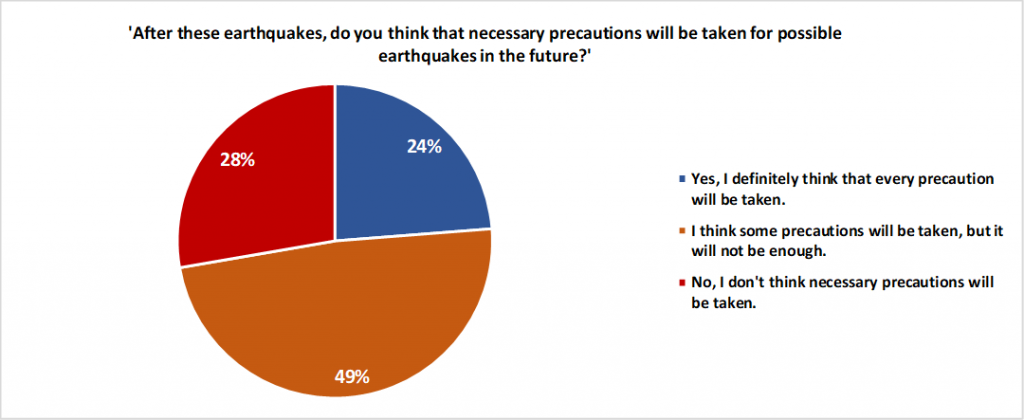
In this research, Ipsos also researched companies that received positive and negative reactions during this period; Starbucks and Netflix stand out as the companies that received the most negative reactions during this period. Telecom operators follow these two companies. Ahbap and Trendyol are NGOs and companies that received positive responses.

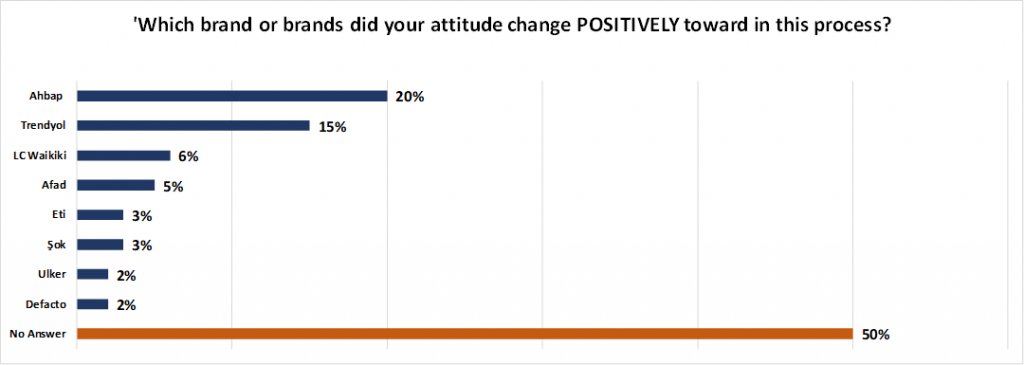
As a result, we should all do our part to get rid of the ostrich paradox; as individuals, we have to overcome the above six biases and ask, “Why don’t you take appropriate measures against our biases?” without leaving the municipalities and public institutions to their own consciences keep them under pressure.
What will municipalities and other public administrators do? First of all, by not profiting off the suffering of others, without throwing their own responsibilities on others, and ignoring the knowledge produced in every field of science, officials will first heal the wounds of this earthquake in a short time, and at the same time, by taking all necessary precautions, they will take immediate actions to protect all our lives in the first place and then our property, against all earthquakes foremost the major Istanbul earthquake.
(*) Meyer R. & Kunreuther H. The Ostrich Paradox, Why We Underprepare for Disasters, Wharton School Press, 2017.
Note: This open-source article can be quoted by citing the author. No copyright is required.

